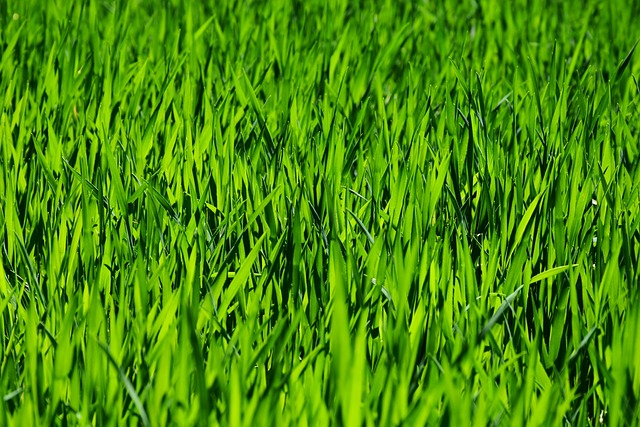Mastering Lawn Care and Landscaping: A Guide to Expert Turf Management
Effective lawn maintenance relies on a comprehensive approach that integrates selecting appropriate grass varieties, mowing at optimal heights, regular aeration, precise fertilization, and integrated pest management to ensure a robust and sustai…….

Effective lawn maintenance relies on a comprehensive approach that integrates selecting appropriate grass varieties, mowing at optimal heights, regular aeration, precise fertilization, and integrated pest management to ensure a robust and sustainable lawn. Soil analysis is an integral part of this process, as it informs tailored fertilization and pH adjustments for optimal nutrient uptake, disease resistance, and overall turf health. Irrigation systems should be carefully designed to match the needs of different areas, using methods like drip irrigation for beds and zoned sprinkler systems for larger areas, while moisture sensors and high-efficiency nozzles enhance water conservation. Overseeding and aeration are key practices for thickening and strengthening the lawn, particularly important for addressing compaction and promoting root growth. By adhering to these best practices in lawn care and landscaping, homeowners can achieve a lush, resilient, and visually appealing landscape all year round, while also being environmentally responsible.
Engage in the art of lawn care and landscaping with expert insights on mastering turf management. This comprehensive guide delves into the essential practices for cultivating a lush, resilient lawn, from understanding soil health to employing eco-conscious strategies that adapt to climate change. Learn about advanced mowing techniques, fertilization plans customized for your local conditions, and seasonal maintenance tasks that ensure your turf stands strong against the elements. With a focus on integrated pest management and water conservation, discover how to maintain a beautiful landscape while prioritizing sustainability. Whether you’re a seasoned turf manager or new to lawn care, this article equips you with the knowledge to nurture a thriving green space.
- Understanding the Basics of Turf Management for Optimal Lawn Care
- The Role of Soil Analysis in Maintaining a Thriving Lawn
- Effective Irrigation Techniques to Nourish Your Landscape
- Strategies for Overseeding and Aeration to Strengthen Your Turf
Understanding the Basics of Turf Management for Optimal Lawn Care

Maintaining a healthy, verdant lawn requires a comprehensive understanding of turf management principles. At the core of effective lawn care lies the selection of the appropriate grass species suited to local soil types and climate conditions, ensuring that the turf can thrive throughout the year. Regular mowing at the correct height for the type of grass being cultivated promotes healthy growth, aids in pest prevention, and reduces the likelihood of weed infestation. Aeration, which allows air, water, and nutrients to penetrate the soil, should be performed periodically to alleviate soil compaction and encourage a robust root system. Fertilization, timed with seasonal shifts and the growth patterns of the turf, provides the necessary nutrients to sustain vigorous lawn health. Integrated pest management practices are essential for controlling insects and diseases naturally, minimizing the reliance on chemical treatments. Lastly, irrigation systems should be optimized to deliver the right amount of water at the right times to maintain soil moisture without waste. Landscaping considerations, such as the placement of shrubbery and trees in harmony with the lawn, can further enhance its overall appearance and health by providing shade and reducing wind exposure where needed. By adhering to these turf management practices, homeowners and landscapers alike can achieve an optimal lawn care regimen that is both aesthetically pleasing and environmentally sound.
The Role of Soil Analysis in Maintaining a Thriving Lawn

A fundamental aspect of lawn care and landscaping that underpins a thriving lawn is the role of soil analysis. Soil testing is an invaluable tool for understanding the nutrient composition and pH levels of the turf’s environment, which directly influences grass health and growth. By collecting a sample of the soil from various parts of the lawn, homeowners and professionals can send it to a certified laboratory for comprehensive analysis. The results provide insights into the soil’s organic matter content, nutrient deficiencies or excesses, and pH balance. This information is crucial for tailoring a fertilization program that addresses specific needs, promoting optimal root development, and ensuring the lawn’s resilience against diseases and pests. Adjusting the pH to an ideal range for turfgrass species can greatly enhance nutrient uptake, leading to a more vibrant, dense, and uniform lawn. Regular soil analysis is an integral part of a proactive lawn care and landscaping maintenance strategy, ensuring that corrective measures are implemented before issues arise, thus maintaining the health and aesthetic appeal of the lawn throughout the seasons.
Effective Irrigation Techniques to Nourish Your Landscape

Effective irrigation is a cornerstone of healthy turf management, ensuring that your lawn care and landscaping efforts yield the best results. A well-designed irrigation system delivers precise amounts of water directly to where it’s needed most, conserving water and optimizing its use for grass growth. To nourish your landscape effectively, consider implementing drip irrigation for flower beds and areas with sensitive plantings. This method minimizes water waste by targeting the roots of plants, reducing evaporation, and allowing for a longer hydration period that promotes deep root growth. For larger, open turf areas, sprinkler systems can be zoned to cover different sections at varying times to match soil moisture levels and weather conditions. Sensors can be added to these systems to trigger irrigation only when necessary, based on soil moisture or weather forecasts, thus further conserving water. By using moisture sensors, you can avoid overwatering, a common issue that can lead to disease and waste.
Investing in high-efficiency nozzles and employing a consistent schedule for irrigation are additional strategies that contribute to effective lawn care and landscaping. These nozzles are designed to break up large water drops into smaller ones, which fall more gently on the lawn and reduce runoff and evaporation. They also enhance penetration and distribution of water into the soil, ensuring a more uniform moisture level throughout the lawn. Regular maintenance of your irrigation system, including checking for leaks or broken heads, ensures that every drop of water is used efficiently, which is crucial for sustainable landscaping practices. By integrating these techniques into your turf management plan, you can maintain a lush, vibrant landscape while being environmentally responsible.
Strategies for Overseeding and Aeration to Strengthen Your Turf

Regular upkeep is paramount in lawn care and landscaping to maintain a lush, healthy turf. Overseeding and aeration are two critical practices that enhance turf strength and resilience. Overseeding involves sowing grass seeds into existing turf to fill in thin areas or improve the grass species composition. This process not only thickens the lawn but also helps to establish a more vigorous turf that can better compete with weeds. For optimal results, it’s best to overseed during the fall or spring seasons when soil temperatures are conducive for seed germination and growth.
Aeration complements overseeding by creating thousands of small holes in the soil, allowing air, water, and nutrients to penetrate the grass roots, stimulating root growth and promoting a healthy turf. Aeration is particularly effective on lawns that have become compacted over time due to foot traffic or heavy use. By relieving soil compaction, aeration encourages the exchange of soil gases and improves the overall health of the turf. Incorporating both overseeding and aeration into a regular lawn care and landscaping routine can significantly enhance turf vigor, density, and resilience, resulting in a visually appealing and functional outdoor space that withstands the rigors of various environments.
Effective lawn care and landscaping hinge on a deep understanding of turf management principles, which encompass a range of practices from soil analysis to targeted irrigation techniques. By applying the strategies for overseeding and aeration outlined in this article, coupled with a grasp of the basics of turf management, homeowners and professionals alike can cultivate thriving lawns that stand resilient against environmental challenges. Implementing these practices not only enhances the aesthetic appeal but also ensures the health and longevity of your landscape investment. Remember, a well-maintained lawn is a testament to the care and attention you give it, reflecting the dedication to both function and beauty in your outdoor spaces.







